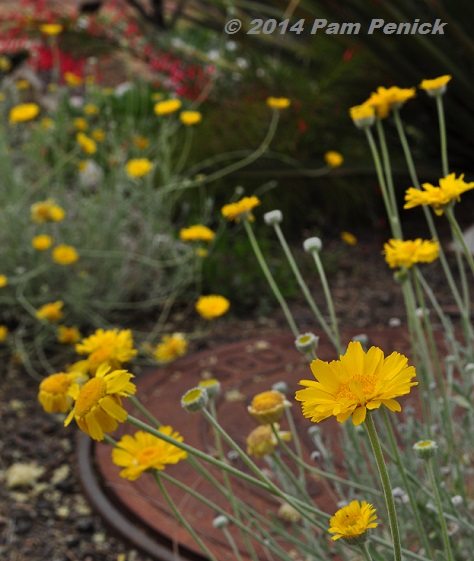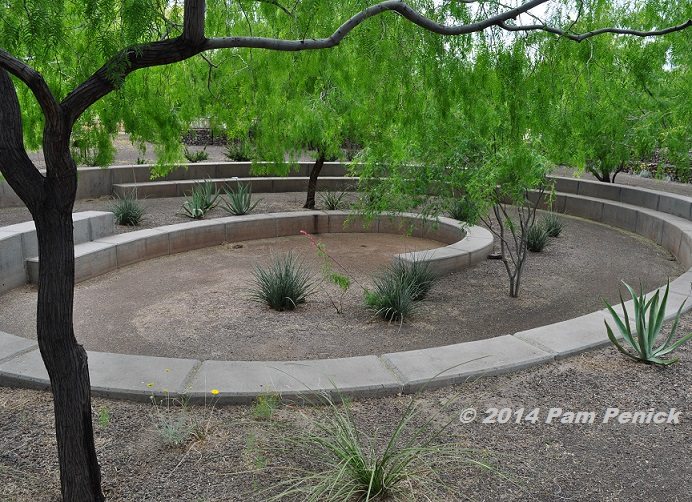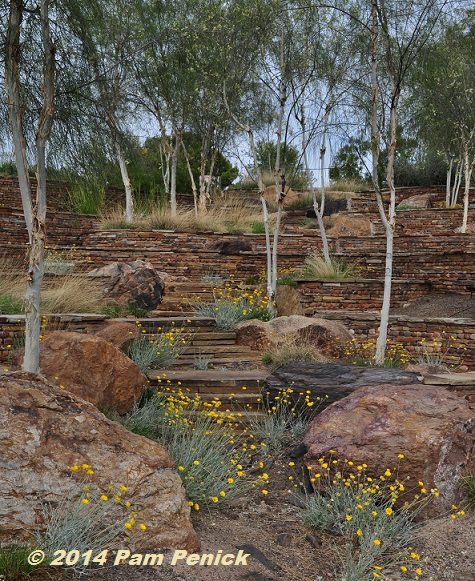Scottsdale Xeriscape Garden shows that saving water can be beautiful.
It’s a common mispronunciation, but it’s also a telling Freudian slip: saying “zeroscape” instead of “xeriscape” (pronounced ZEER-escape). To xeriscape is to design a garden that conserves water through the use of drought-tolerant plants grouped according to water needs, water-collection systems, mulch, non-wasteful irrigation, and other commonsense yet once-radical gardening practices. But to zeroscape — to my mind, anyway—means to spread a bunch of rocks across one’s yard, maybe plant one agave or cactus, and call it done. In drought-prone climates like mine in central Texas and in arid ones like Arizona, xeriscaping is a popular concept, promoted by city water utilities and conservationists and eagerly embraced by homeowners who want to save money on their water bills and do the right thing. And yet I still hear the word “zeroscape” on a regular basis, hinting that many people think water conservation means essentially giving up on having a beautiful garden.

The Scottsdale Xeriscape Garden at Chaparral Park, in suburban Phoenix, is a perfect illustration of the wow factor a xeric garden can provide. I visited in early April, when the garden was awash in golden spring blooms and was captivated and inspired by its design and beauty. It begins with an overscaled, rusty steel vessel brimming with water— a symbol of abundance in an arid climate and a “sacred element,” according to landscape architect Christine Ten Eyck, who designed the garden. On the submerged rim of the vessel is inscribed this poignant reminder: “The frog does not drink up the pond in which he lives.”
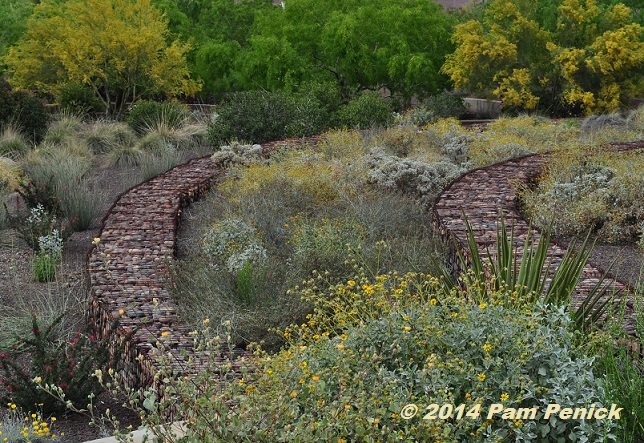
Throughout the garden, gabion walls—heavy-duty, wire constructions filled with river rock—support curved terraces designed to slow the flow of water, allowing precious rainwater to soak into planting beds.
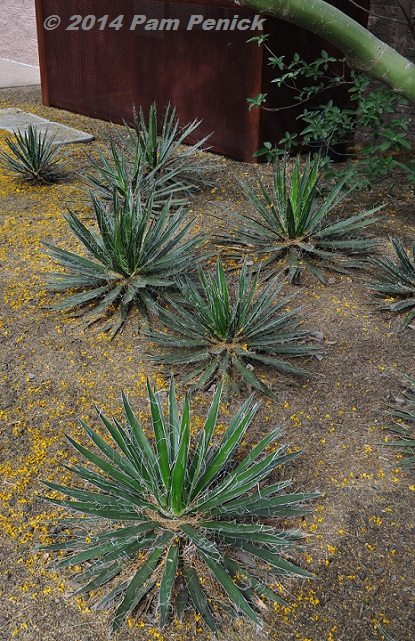
Xeric (dry-loving) plants like agaves, aloes, and native grasses are generously massed for effect.
A winding path leads to the Mesquite Bosque, where spiraling concrete walls wind to the bottom of a bowl-like space, creating a naturalistic amphitheater that also acts as a water-collection basin when it rains. Mesquite bosques, or groves, were once prevalent along streams and rivers throughout the Sonoran Desert, according to the garden’s website, and this design references that natural history.
The most spectacular feature of the garden is an environmental artwork by Lorna Jordan called Terraced Cascade, a stair-stepping series of stone retaining walls that evokes a cascading waterfall and that collects and absorbs rainwater when it comes. Masses of white-trunked palo blanco trees (Acacia willardiana), small grasses, agaves, and desert marigolds fill the terraced beds. If you still need convincing that you can grow a beautiful garden that doesn’t waste water, visit Scottsdale Xeriscape Garden in person. You’ll see that there’s nothing “zero” about this xeriscape.
A version of this article first appeared at Digging.
From time to time, Water – Use It Wisely features guest bloggers who write about topics related to water and water conservation. Pam Penick, who blogs about hot-climate gardening at Digging, is author of Lawn Gone! Low-Maintenance, Sustainable, Attractive Alternatives for Your Yard and a garden designer in Austin, Texas.
A big “thank you!” to Pam for contributing to the Water – Use It Wisely blog. For those in Arizona, please visit our Xeriscape resources page for more information on planning, maintaining and efficiently watering a xeriscape landscape. There are also a variety of (Arizona) landscape rebates available at http://waterawarenessmonth.com/rebates.php.


